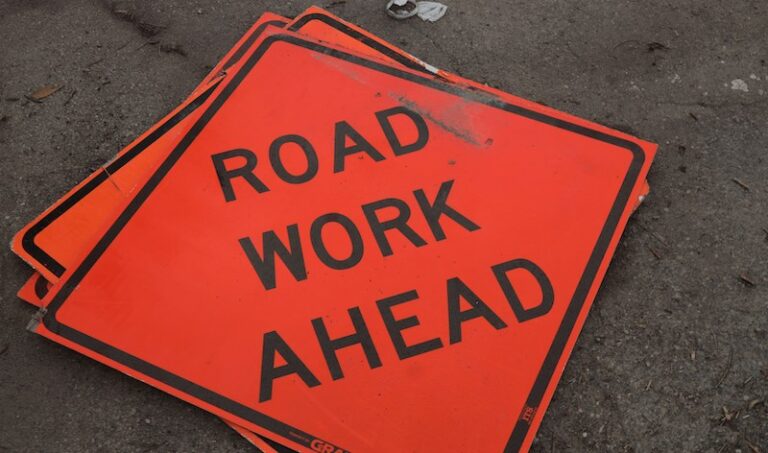
Co-authored with Joel Rogers, director of COWS, the national resource and strategy center on high-road development that also operates the Mayors Innovation Project, State Smart Transportation Initiative (with Smart Growth America), and ProGov21.
Co-authored with Mike Bell, Chief Executive Officer of Envisio Solutions.
“Never let a good crisis go to waste.” — Anonymous
“Do the right thing. It will gratify some people and astonish the rest.” — Mark Twain
Long before the current crisis, many local governments in the United States were financially strained, with revenues tracking well below total liabilities. They were struggling to generate wealth locally, and to raise adequate revenue from the taxes and fees applied to land assets and activity. In many places revenues were insufficient to assure equal access to residents’ basic needs (food and water, safety, health, mobility, communication, education, recreation) or pay the legacy costs of maintaining the infrastructure built for post-WWII auto-based development. During the Global Financial Crisis, and continuing today, local governments functioned by cutting services, deferring maintenance, and borrowing to make ends meet. This is not a recipe for growing local wealth and doing “the people’s business” of building strong communities.
It’s possible, however that SARS-CoV-2 pandemic’s combined social and financial impact will inspire and enable positive and fundamental change. That would mean political, civic, and citizen leadership learning from what came before it and committing to taking a long-term, strategic approach to building strong communities.
Many managers have been worried about their government’s looming problems for some time, but have been unable to find a politically palatable way to raise the issues with their residents. Here’s the chance. The pandemic will bring all of these issues to the forefront and managers can use the opportunity to say “here’s what we can do to fix it…now and for the foreseeable future.”
What do we all want?
Whatever our disagreements, we think it fair to say that virtually everyone wants a decent place to call home. For us, that means a place that has some attractive and recognizable identity, that acts with a view to being around for a good long while, that’s prosperous and fair enough to offer all its residents a chance to live a good and full life, and that’s able to weather shocks while keeping its identity.
To be these things, a community cannot be financially insolvent, or on the way to insolvency by taking on more obligations than it has the resources to discharge. It should manage whatever assets it has with care. It should seek to grow them through entrepreneurship and experiment, both public and private. It should always be aiming to increase its productivity—not just the productivity of its individual residents or firms, but of itself as a community, by reducing waste and growing values. And it should always try to capture a large share of the gains from that place-based productivity locally. This can be done anywhere. Every community we know of has waste that can be eliminated. And every one has smart people who have practical ideas on doing things better, and one or more second stage firms that could use some help to grow.
Worth emphasizing—given all the challenges that communities can expect not just as a result of the pandemic, but from longstanding but repeated and escalating disruptions in their natural, social, and economic environment—it also makes sense for communities to try to anticipate those disruptions and do their best to defend against, mitigate, or at least prepare and plan to adapt to those beyond their control. This is the prudential value of building resilience.
But we don’t only want resiliently prosperous places. We want decent ones, comported by our values. Places where we’d like to raise a family and to which our children and their children want to come home to. If productivity is what makes a place rich, and care and planning are what are needed to make it resilient, what makes it worth fighting for are its values. Here are ours:
Shared prosperity—Getting the productivity that increases community wealth (either by reducing waste or adding value) requires efforts by lots of people. We think they should be respected and rewarded for their contribution, and that all should have a fair opportunity to make that contribution and get that reward.
Democracy—Democracy is an open-ended ideal of governance, which basically means self-rule with equal respect among members of that self-ruling society. So far as we’ve seen, it’s the best way to govern a society (not the easiest!), since it makes its members responsible for that society. Democracy is also a way to increase productivity. By respecting people’s contribution, it gets more of it.
Sustainability—This basically means behaving in ways that don’t limit opportunity for future generations. Our kids, and grandkids, and their kids, etc., should have least the opportunities we did.
With these values as our guiding light we begin the work of planning for resilient and productive places. The results will gratify most (including your own constituents) and astonish the rest.
Where do we start?
In the next few months, most managers will be consumed with crisis management, aligning resources to meet immediate needs and ensuring accountability. But even in this period, local governments can begin to take measure of where they were pre-pandemic “normal” period financials, net assets and values flows, obvious areas of underperformance, curable negative externalities or other issues—and begin to uncover opportunities for aligning under a new service delivery paradigm.
The key areas to research are:
- What are your commercial value flows, both in direct revenues and community wealth building?
- What are your assets, physical, human, natural, financial, and legal?
- What are all of your liabilities, both on and off your books?
- What authority do you have to act in your state laws, charter and code?
As you start to take stock of your current position and begin to plan for the future, here are a number of resources to help you evaluate where you’re at and what actions you will want to take to move forward.
- Resources for Starting Your Assessment
- COWS, resources for high road, productive democracy
- Strong Towns, tools for making communities financially strong and resilient
- Urban3, promoting long term economic sustainability in development
- Center for Neighborhood Technology, improving cities’ economic and environmental sustainability
- Smart Cities Council, using technology to create smart, sustainable cities
- Government Finance Officers Association’s Fiscal First Aid
- Resources for Demographic and Economic Data
- Census Bureau, demographic data
- Moody’s economy.com, economic news and analysis
- George Washington University (Andrew Reamer):
- Non-traditional economic data sources, list of organizations
- Federal Sources of Entrepreneurship Data
- Counting for Dollars 2020, report 7B has census-guided federal spending by state
- Indiana University’s StatsAmerica, portal for data on places
- PolicyMap, geographic data
- Headwaters Economics tools, free data analysis tools
- Council for Community and Economic Research (C2ER), cost of living index and business incentives data
- Economic Innovation Group, promoting an innovative and accessible U.S. economy
- Resources on Innovation and Performance
- Harvard Kennedy School’s Ash Center for Democratic Governance and Innovation
- John Hopkins’ Center for Government Excellence (GovEx)
A Plan for Change
A companion to this post is the productive places road map, which provides focus areas and strategies to put you on the path to making significant changes. The plan is structured so that it can easily be loaded and managed in Envisio, but we have also created a customizable template to help you organize your plan if you don’t use software to manage performance.
There are five key complementary requirements of this effort covering the key areas for local government service delivery, policy formation, and management:
- Community Engagement and Outreach—To best inform our community about strategic choices and understand what our constituents want and need we must engage in an ongoing dialogue with them, using what we learn to inform policy decisions, service design and resource allocations.
- Best Use of Financial Resources—We have a limited amount of resources that can be affected by numerous factors so we must understand and manage those resources carefully and with the ability to respond to changing conditions.
- Best Use of Physical / Natural Assets—The natural and built environment are the building blocks of our community and we must plan to use these resources in ways that are sustainable and protect our ability to prosper in the future.
- Best use of Human Resources—Our people must be empowered to make decisions and provide excellent customer service while we develop their skills and help them achieve their goals. As organizations, we must build leadership qualities for today and identify and develop the leaders of tomorrow.
- Management Alignment / Processes / Performance Management—We must provide efficient and effective processes to manage and deliver services. Once the processes have been designed and implemented, the data we collect about them can help us to monitor progress, improve performance and achieve the outcomes our community desires.
Our road map and template will flesh the focus areas out with recommended strategies and key performance indicators.





